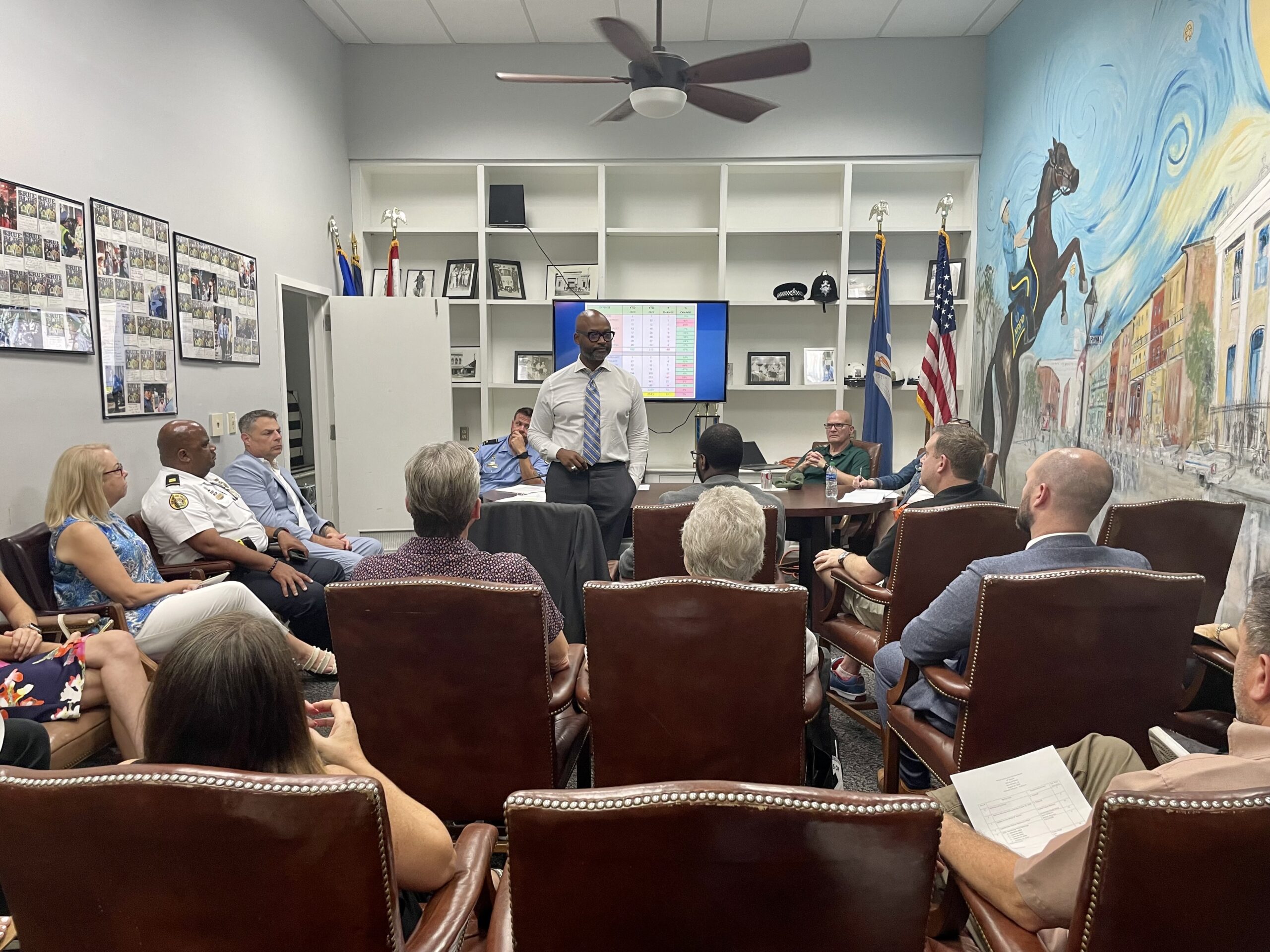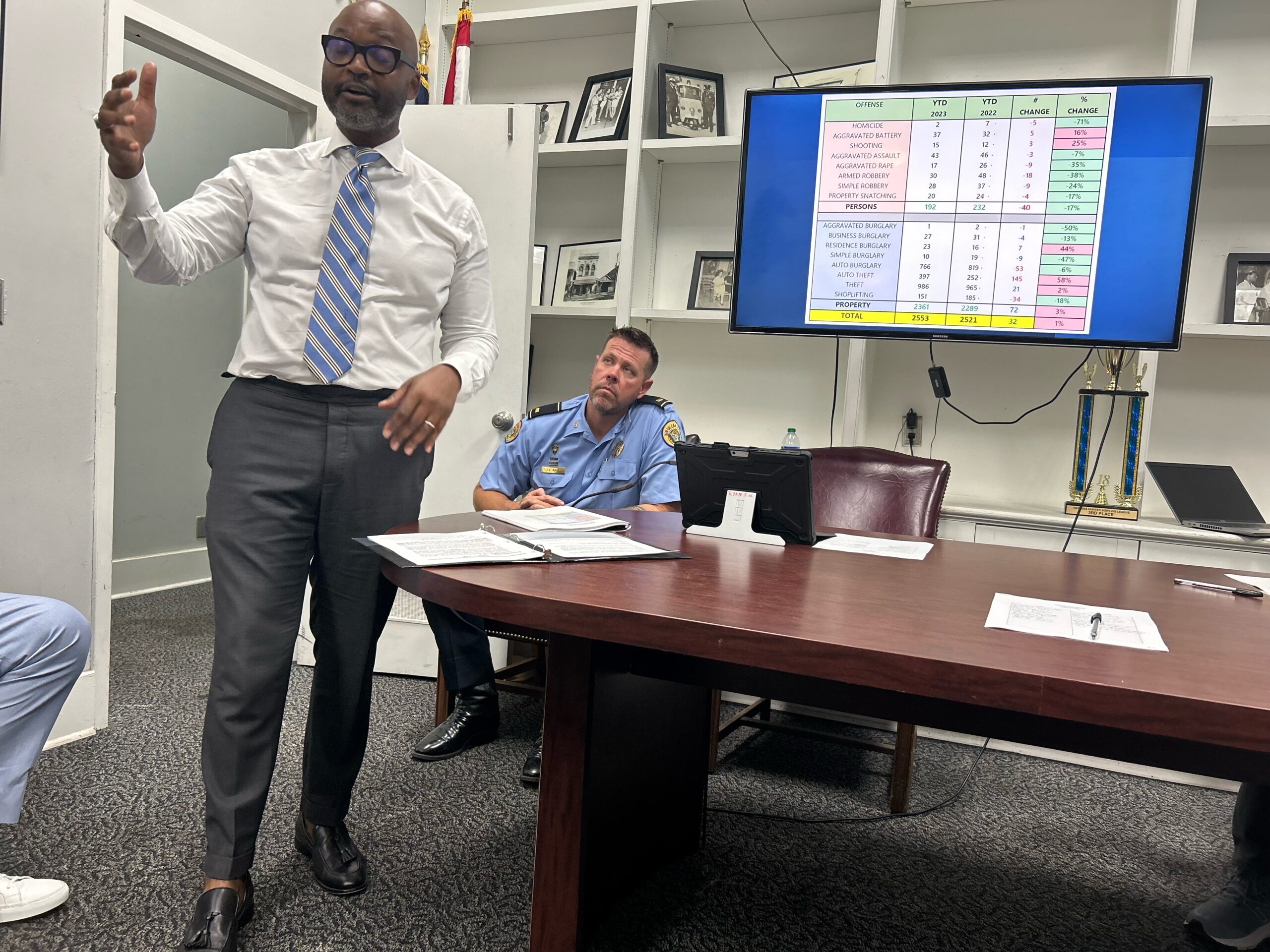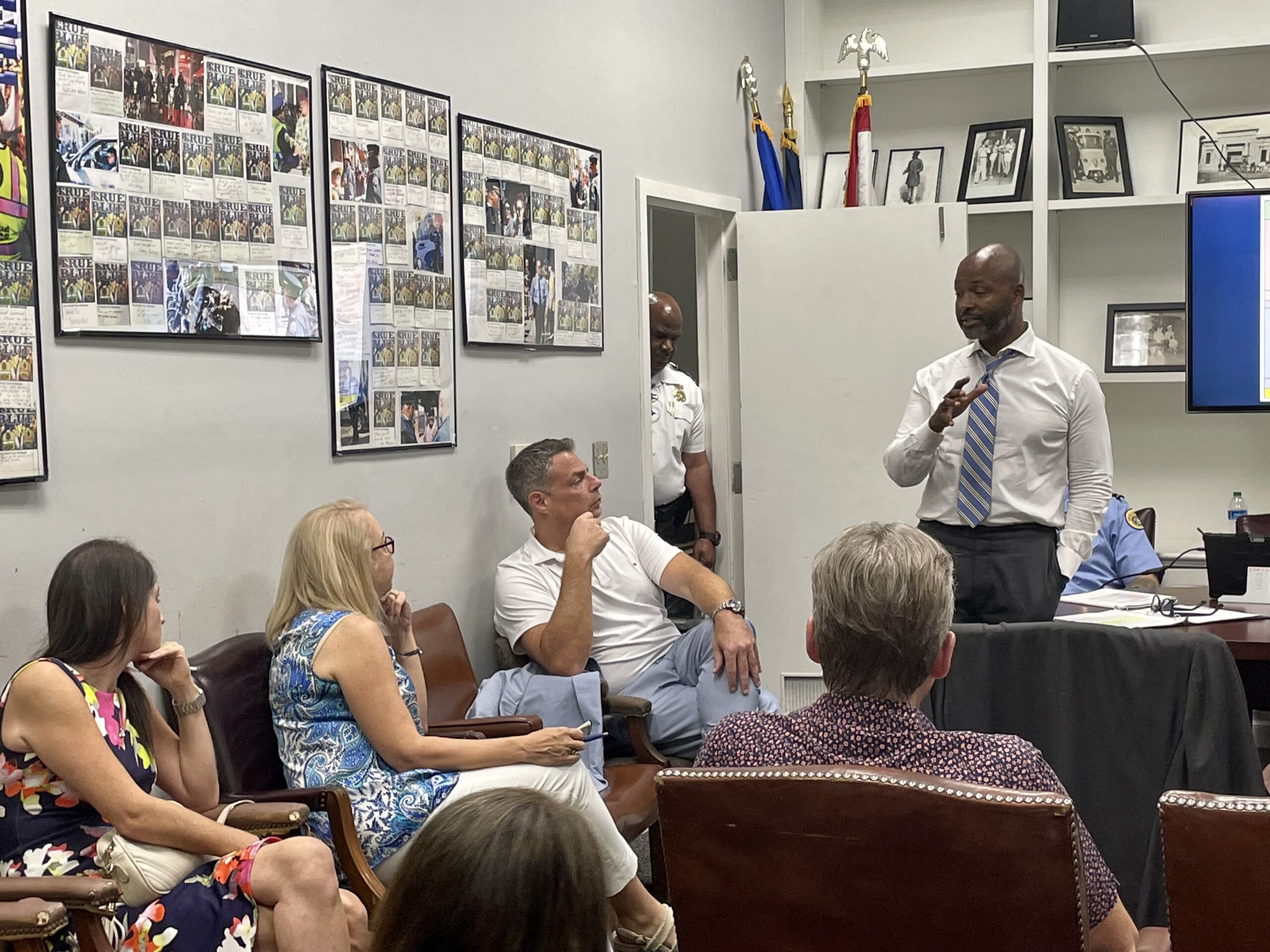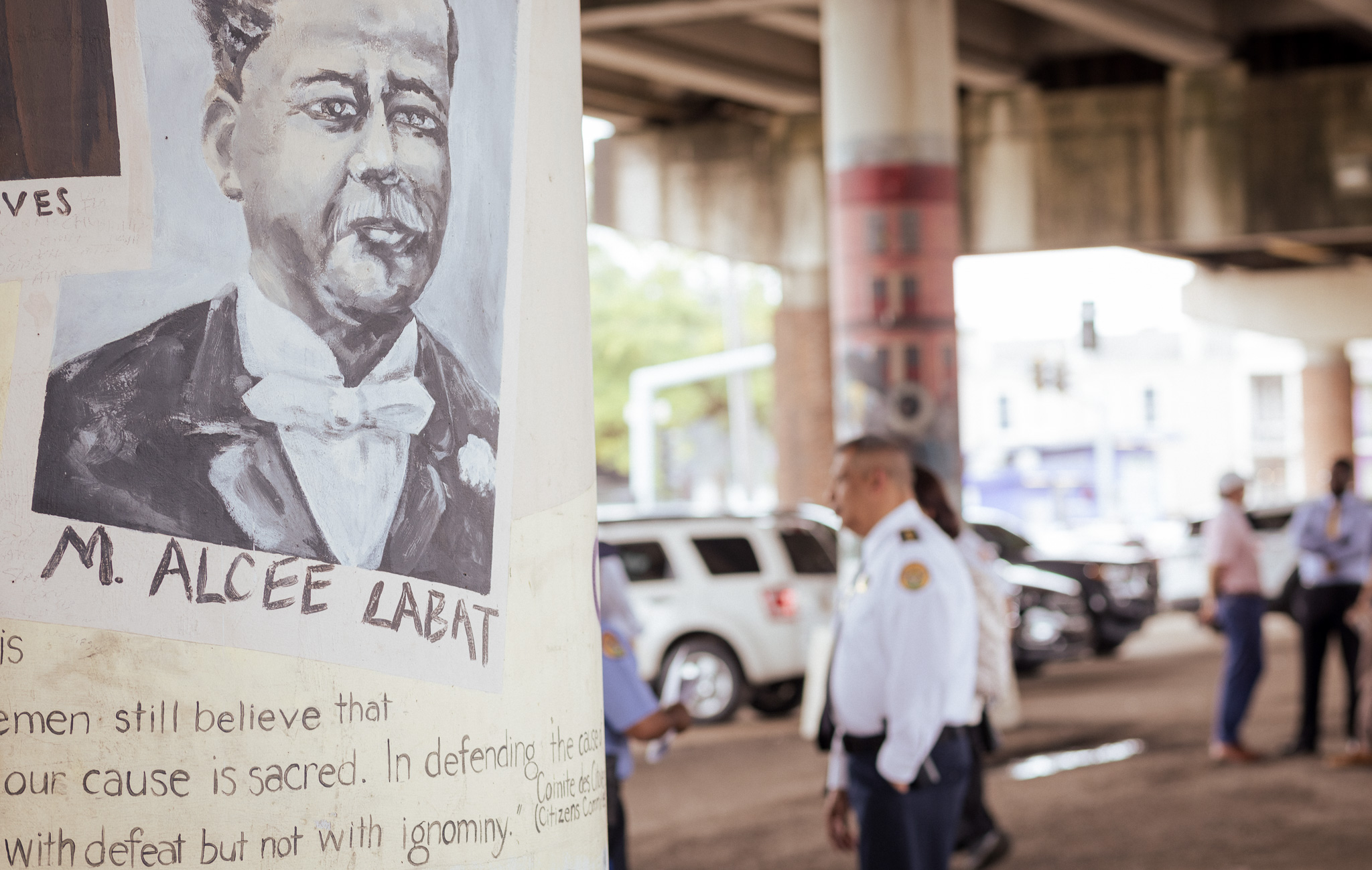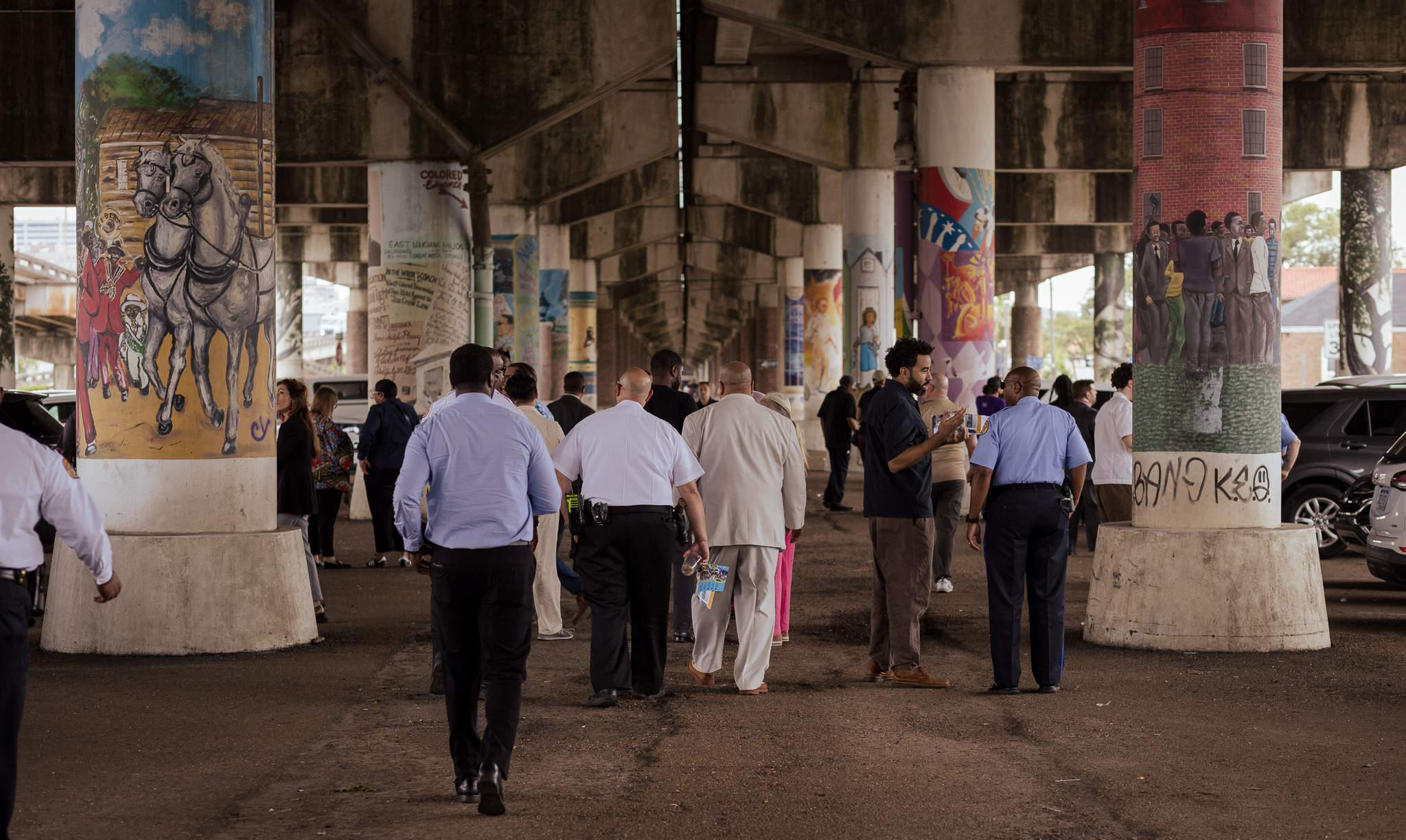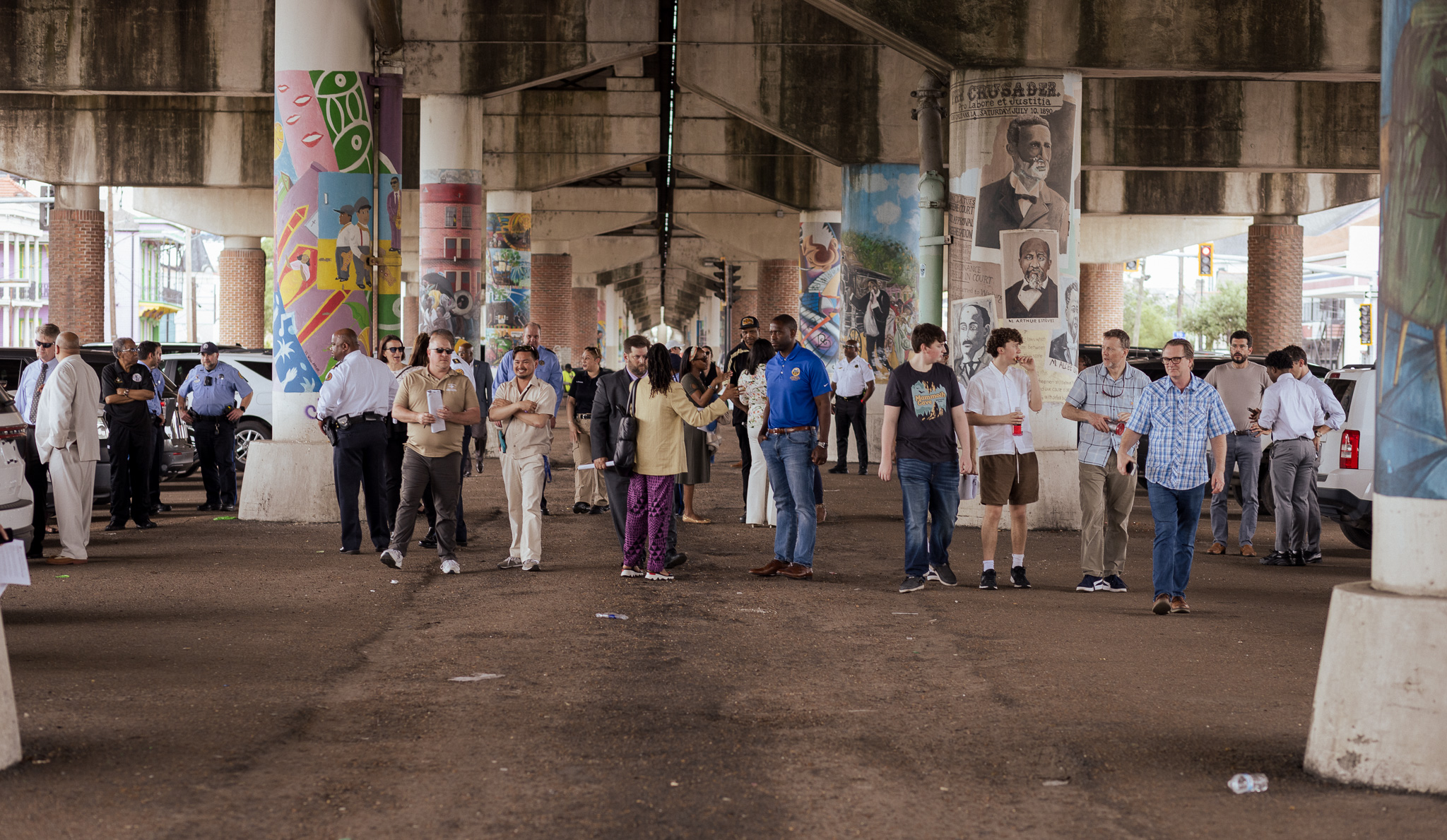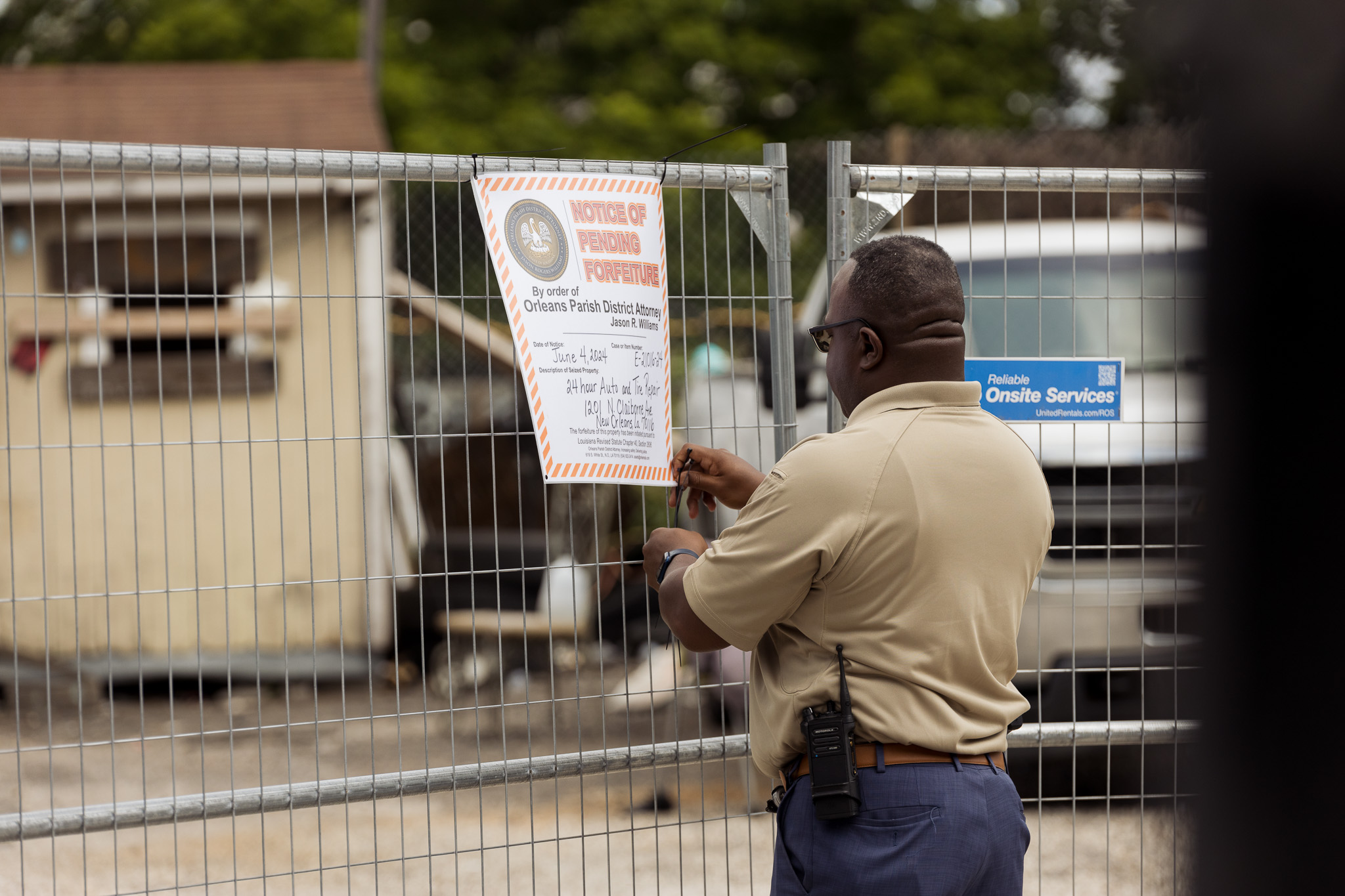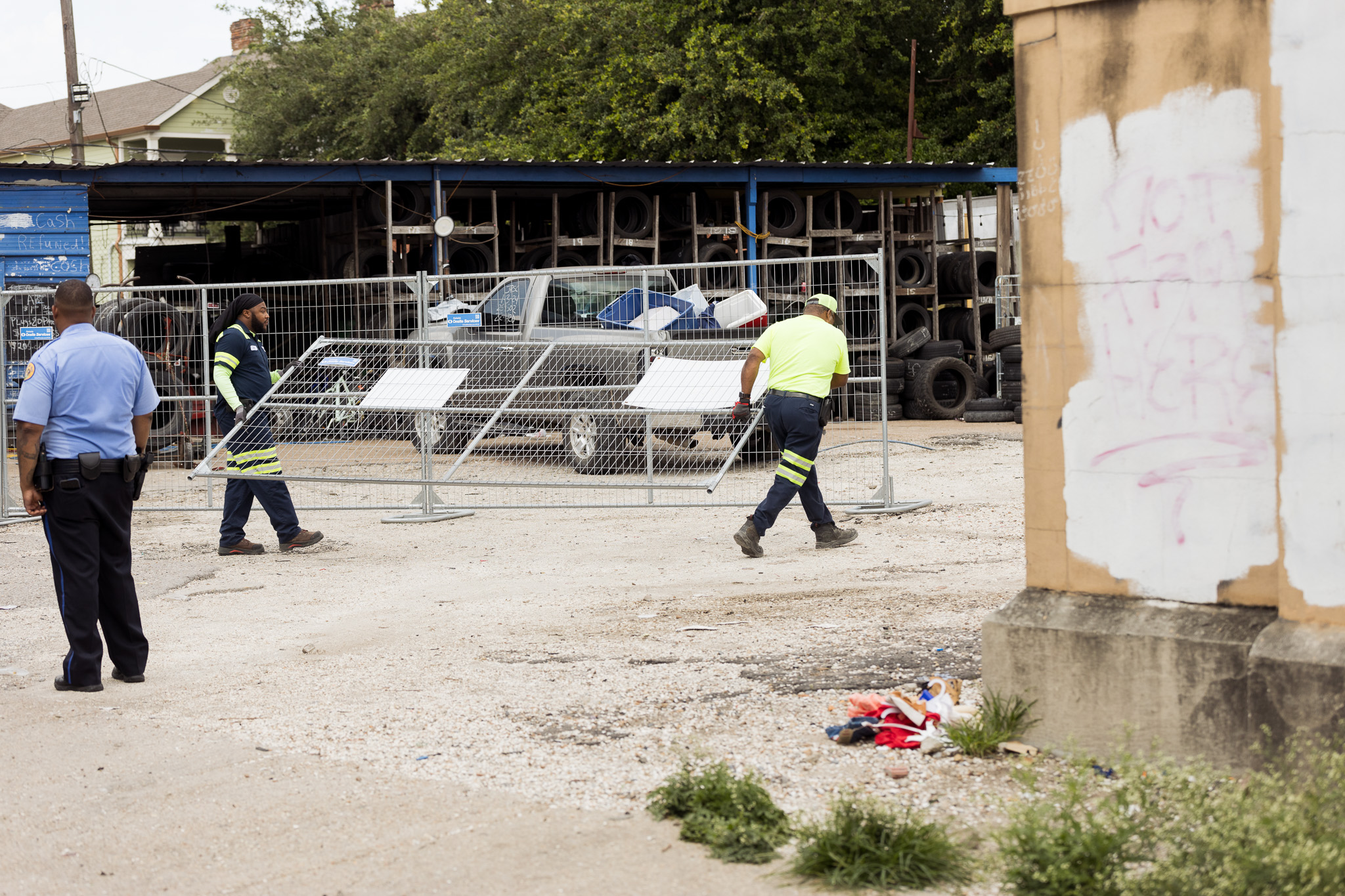New Orleans Data-Informed Community Engagement
Focusing on Places That Drive Crime.
The New Orleans Data Informed Community Engagement (N.O.D.I.C.E.) Program and the use of Risk Terrain Modeling represent the evolution of public safety and prevention, offering an expanded continuum of crime prevention tools. N.O.D.I.C.E. utilizes modern technology to identify vulnerable areas and employs data-driven resource deployment to address pressing community needs.
N.O.D.I.C.E. guides decision-making and action by focusing on and prioritizing public safety, quality of life, and economic development resources in areas of highest need. In essence, these initiatives aim to make conditions on the ground less conducive to criminal activity by optimizing community engagement methodologies. This strategy is already aiding system partners in better allocating our precious resources to areas where data indicate they will yield the greatest impact.
What is Risk Terrain Modeling?
Posted by Simsi Team on February 4, 2021
Risk terrain modeling (RTM) is risk assessment for places. It’s a data analysis technique. And, it’s a diagnostic tool. When used for crime analysis, RTM identifies environmental conditions that contribute to crime problems. Different crime incident locations can have common underlying causes. That is, events may be unrelated, but attractive settings for them may share similar qualities. RTM sheds light on why crimes pattern the way they do. It puts the focus on places, not people.
RTM analyzes the spatial patterns of crime incidents by linking the built environment to criminal behaviors that result in crime outcomes. Raw crime data becomes more meaningful. Diagnosing crime patterns with RTM lets you accurately anticipate where and why problems will emerge or persist.
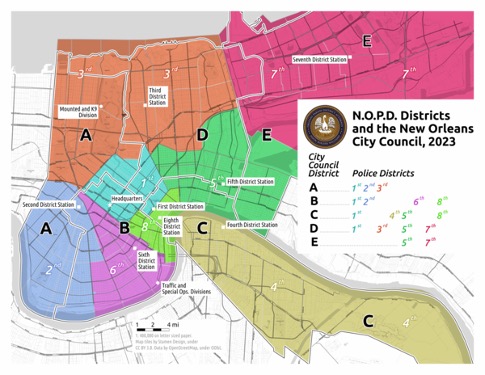
A map of the eight Districts each OPDA District Screener is assigned to.
RTM is not Predictive Policing.
Posted by Simsi Team on February 13, 2021
Risk terrain modeling (RTM) is a diagnostic tool for crime prevention, it’s not a predictive algorithm. The only true measure of successful predictions is for crimes to occur where predicted, which is not in the public’s best interest. Predictive policing algorithms rely on past crime incidents to predict new crime events. If crimes are prevented, these algorithms won’t have enough input data and will stop working, or worse, they’ll become misleading.
RTM encourages effective and sustainable prevention efforts and directs its analysis to dynamic conditions of the environment where crime events could occur. RTM focuses on geography, not the event.
RTM adds context to raw crime data, and is designed to help you understand and explain the reasons why crimes happen where they do. RTM diagnostics forge confidence in decisions to deploy resources to places most in need of crime prevention programming and services. This can involve multiple community stakeholders — beyond police, and encompass a wide range of activities to protect people and properties from various dangers affecting their general well-being.
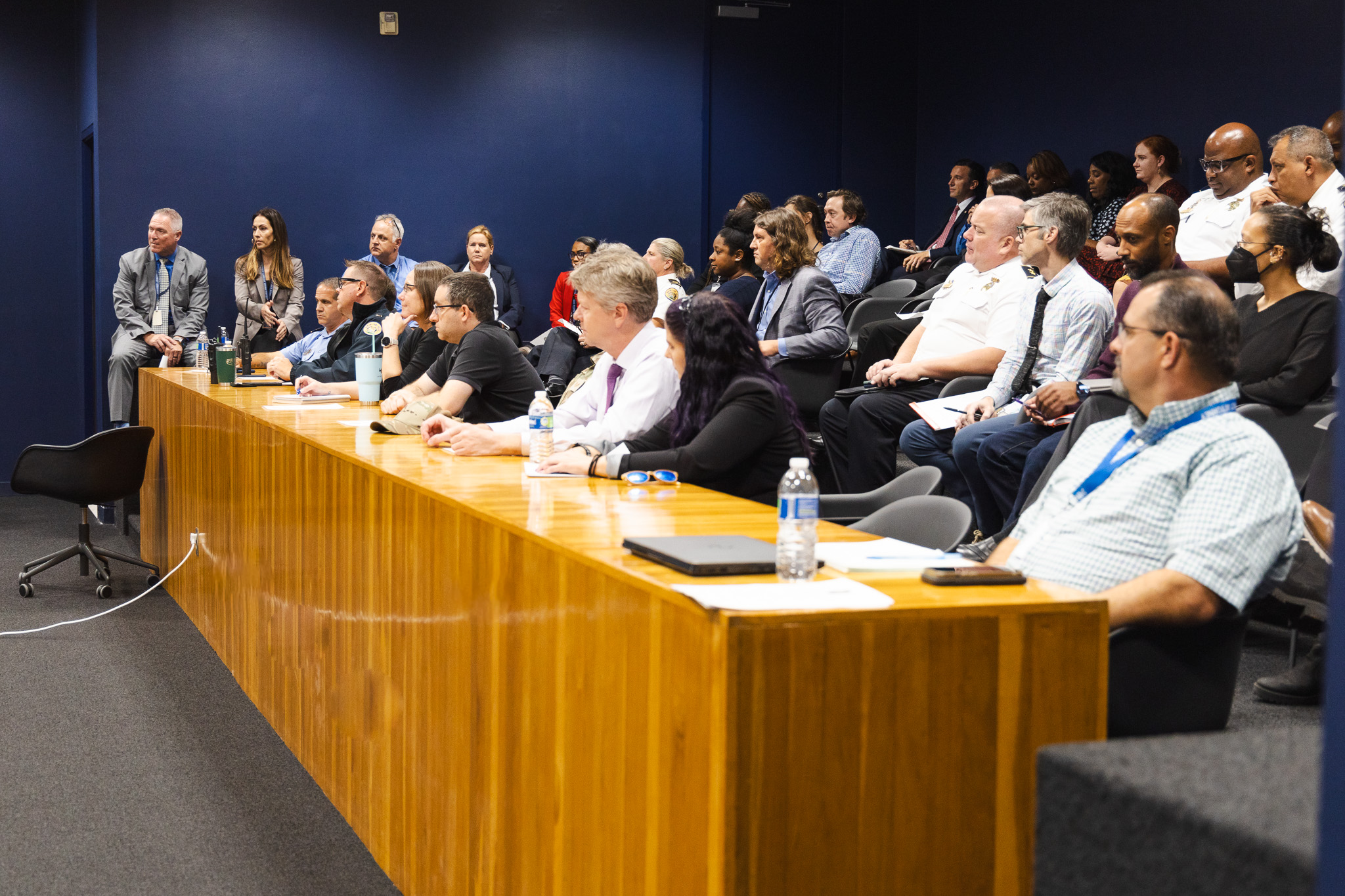
Andy Horn took a role in the private sector with a public-safety technology company, managing new and emerging markets. In mid-2023, Andy joined Simsi to head their Growth team, supporting the community interest in the adoption of risk terrain modeling and DICE(TM) methodology.
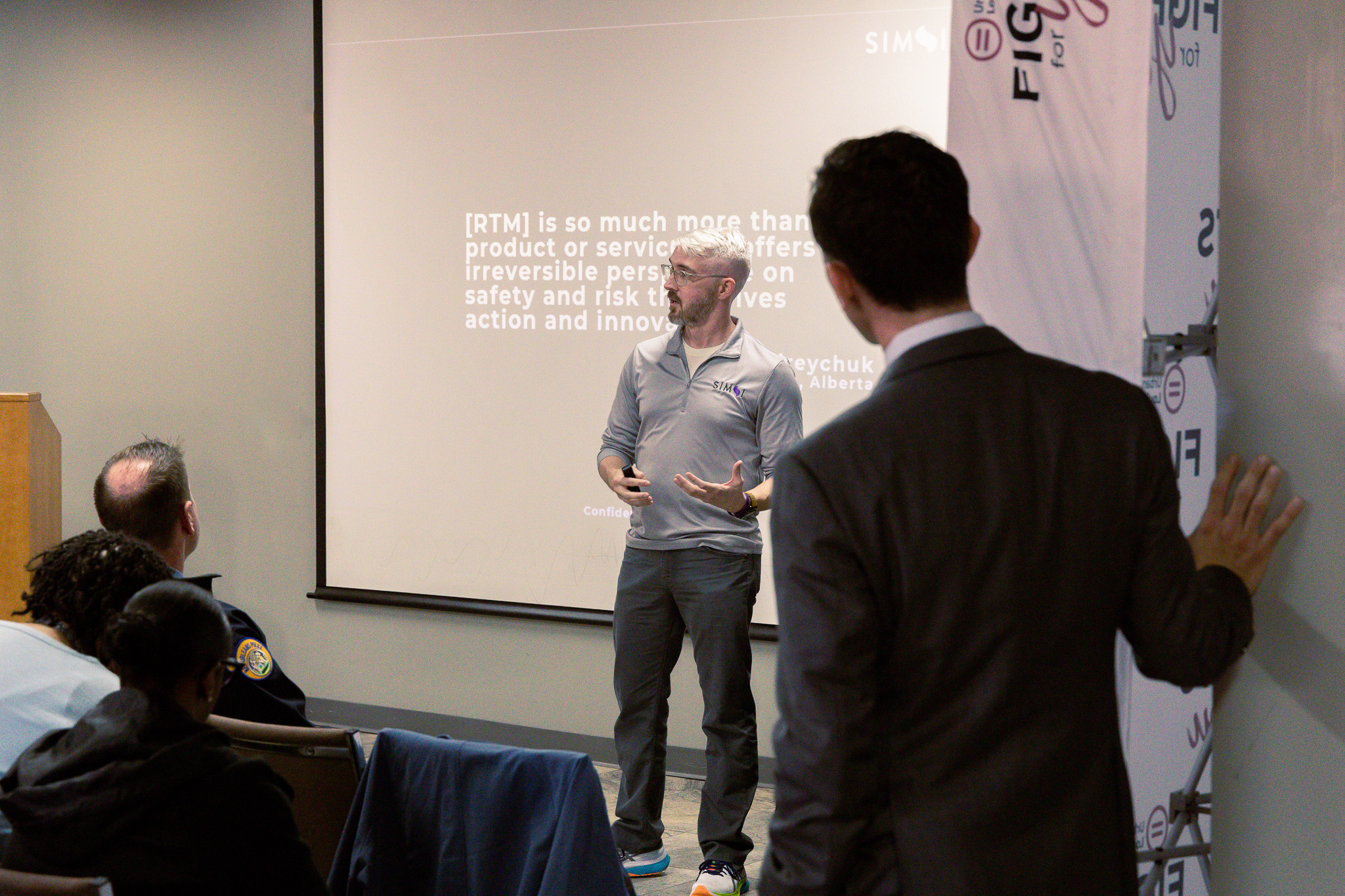
Simsi Representative, Andy Horn
Data-Informed Community Engagement (DICE)
The six principles of DICE are:
1. Convene local stakeholders, including police and law enforcement officials, to a data-informed discussion.
2. Democratize the use of data and analytics with a focus on place-based analytics.
3. Solicit and value input from community stakeholders, including law enforcement, businesses, and local government about situational crime contexts, preferred outcomes, and performance measures.
4. Make data-informed decisions following a transparent process of problem definition, information gathering, and analysis.
5. Mobilize community resources and expertise to problem-solve the most pressing crime issues.
6. Empower community organizations to become co-producers of public safety.
Data-informed community engagement (DICE) uses ‘RTM‘ to diagnose crime problems, form risk narratives, and develop place-based strategies to disrupt the narratives with coordinated responses by multiple stakeholders and resources.
DICE strategies share the burden of crime prevention and public safety among multiple stakeholders who deliver a variety of resources to places that need them most.

OPDA Chief of Screening Andre Gaudin, Jr. said, “The DA’s Office is utilizing technology to improve efficiency and make the most of limited city resources. The RTM system focuses on areas that are prone to crime and takes into account geographical and urban elements that contribute to criminal activity. This helps law enforcement agencies and stakeholders understand the risk of victimization in different parts of the city. By gathering data from various sources, including city agencies, blighted properties, and local businesses, the RTM system allows for a more sophisticated approach to public safety than just traditional police work. The system is supported by DICE and is designed to make data collection more accessible and democratic, helping to maximize resources and support partners at NOPD.”

District Attorney Jason Williams said, “Simply put, these are the tools and force multipliers we need to increase safety and deliver justice in the criminal legal system of New Orleans. My office acknowledges the changing criminal patterns in our city and fully supports the use of technology to combat violent crime in our community. We have to take the next steps and be ahead of the game with the help of motivated leadership and community partners to put game-changing ideas into action that will help our office in identifying the root causes of crime, being specific about the individuals that are arrested and making sure we can secure guilty verdicts in court without reasonable doubt. The fact of the matter is that the criminal element and perpetrators of violent crime have embraced technology at a clip faster clip than anticipated, but our solution is having more players in this fight and being strategic about it. I believe that using the District Screener Unit and implementing Risk Terrain Modeling is like having better-equipped players on the field, helping us reduce crime by identifying problem areas with the community’s help.”
The Orleans Parish District Attorney’s Office provided a public update on its next steps building on the success of “Operation Big Easy”, a sweeping multi-jurisdictional enforcement operation focused on weapons and narcotics in the region. “Operation Big Easy” made momentous strides in disrupting organized crime, resulting in 41 indictments and the confiscation of over 70 firearms.
The DA’s office has successfully shuttered a problematic business establishment that has long been associated with criminal activity. DA’s office has shut down 1201 Bienville St., also known as the New Image Market and the prior proprietor has been mandated to renounce all claims to the property.
District Attorney Williams emphasized the methodical strategy behind the effort, stating, “This is ‘chess, not checkers’. This operation was a checkmate in a single board clearing move. It took out Kings, Knights, Bishops, and Rooks at one time. This is what being progressive looks like. Being smart on crime, by not only making key arrests that will be aggressively prosecuted but also going after and targeting the sites and hubs for criminal activity. This is truly crime prevention, which leads to our ultimate goal of creating a safer city.”
One former NOPD officer said that the location has been a hotbed of criminal activity since 1982, when he was assigned to the area and the site had never relented until now.
DA Williams Announces Shut-down of Local Establishment, known as an Epicenter for criminal activity since the 1980’s

NODICE x Claiborne Ave.
NODICE x The Roots of Music
Historic Victory for Treme Neighborhood: NODICE Initiative Leads Successful Seizure of Crime-Infested Tire Shop
OPDA Partners with NOPD, ATF to Seize Business at Center of Crime, Nuisance at 1201 N. Claiborne Avenue
New Orleans, LA – The Orleans Parish District Attorney’s Office, in collaboration with the Bureau of Alcohol, Tobacco, Firearms and Explosives (ATF) and the New Orleans Police Department (NOPD) Joint Taskforce, has successfully seized and shuttered a notorious crime center at 1201 N. Claiborne Avenue. This operation marks a major victory for the Treme Neighborhood and the historic Claiborne Corridor.
The seized location had long been a source of crime, quality of life violations, and community outcry. This operation was a comprehensive collaboration aimed at relieving the community of a repeated bad actor who was driving up violent crime, property crime, and drug crimes.
“This isn’t just about shutting down a business. It’s about listening to the people who have lived here for generations and following the data to achieve better outcomes. We are proud to deliver on a promise and reclaim this area for the historic Treme community,” stated District Attorney Williams.
District Attorney Williams expressed appreciation for the unified effort that led to this achievement. “Standing here today, I am proud to be shoulder to shoulder with colleagues, partners, and the community who have all contributed to this significant victory for the Treme Neighborhood and this historic corridor. Our Data Informed Community Engagement (NODICE) initiative worked closely with the ATF and NOPD Joint Taskforce, leading a thorough investigation of this tire shop, culminating in arrests and its seizure yesterday at approximately 9:30 am.”
The NODICE initiative, a key crime reduction unit of the District Attorney’s Office, is data-driven and supported by a multidisciplinary team.
Daniel Shanks, who serves as the OPDA’s Director of Strategic Initiatives and leads the NODICE effort, spoke about the success of this operation. “This location was a known haven for criminal activity. The data showed it was one of the riskiest places in New Orleans. You were 28 times more likely to be a victim of crime at the corner of Claiborne and Esplanade. When we looked at the actual crimes that were occurring in this corridor, we found that over 46% of the incidents were coming from the 1200 block of Claiborne – where we stand today.”
Shanks heaped praise on the invaluable partners who made this effort a reality. Crediting the leadership and smart policing of 1st District Captain Kendrick Allen and his team (including Officers Kyle Hinrichs and James Weir) and ATF Agents Craig Blair and Tim Jones, who guided the operation and were represented by ATF Assistant Special Agent in Charge Ford during the press conference.
In addition to the major boon from law enforcement, Shanks credited Rep. Knox for his focus and leadership in the Treme neighborhood that garnered support for this effort, as well as other key contributors like City of New Orleans Homeless Services Director Nate Fields, Code Enforcement Director Anthony Davis, and Claiborne Innovation District President Nyree Jones. There were also a host of residents and support staff on the ground who devoted their time, energy, and knowledge to this effort who deserve immense credit.
DA Williams closed, sharing the importance of this form of prevention work as a necessary part of public safety: “We can prosecute every arrest and work our hardest to bring justice in every case, but we won’t truly change our city and make an impact until we change facts on the ground and give every community their due support by cutting the cancers out.
This multiagency, multidiscipline partnership is a firm commitment from us all to do just that.”
NODICE x Hardin Park
NODICE is dedicated to creating holistic, tailored plans for the communities we serve. Our approach is truly community-driven, bringing together law enforcement, philanthropy, city services, and cultural pillars—all focused on the safety and well-being of the children and families of New Orleans.
We began focusing on Hardin Park after analyzing historical data that highlighted areas with high incidences of gun violence and family violence within the community.
Following our data review, we engaged with faith leaders and community leaders, going block by block to listen to the real stories of those who have lived in Hardin Park for decades.
We learned that blight, drug activity, and gun violence are major concerns for most residents. We also discovered that these issues are directly affecting the youth by discouraging them from using the park and participating in potential after-school programs.
This initiative is not just about addressing problematic locations and actors; it’s also about nourishing and uplifting the community.
▪ Our original investigation of violent crimes in the area found that the combination of squatted homes, potential distribution houses, and corner stores contributed to violent crime.
▪ NODICE and its partners encouraged the improvement of the squatted homes on Allen Street, improved attention on Hardin Park, the possibility of flood mitigation to improve quality of life, and more issues. Concurrently, we hope violent crime has capped.
▪ We’re investigating different motivations for different spikes in crimes. Various motivations include drive-by hits, domestic and acquaintance violence, and violence from random strangers.
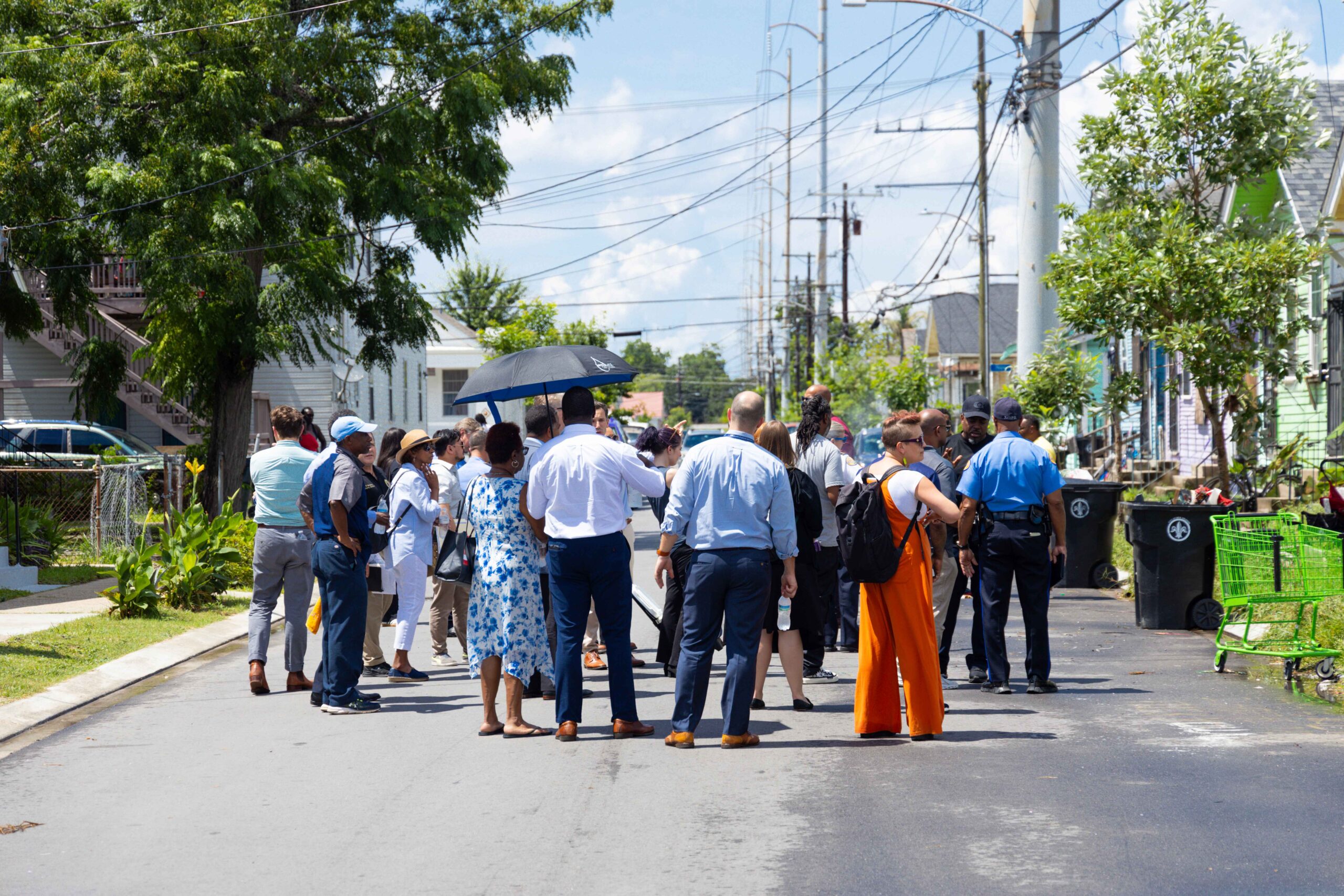
Push to Revitalize 7th Ward’s Historical Hardin Park
NEW ORLEANS — Hardin Park in the Seventh Ward is steeped in historical significance, but over the years, the park has fallen into disrepair.
According to the Orleans Parish District Attorney, the park and its surrounding area have become rife with crime. However, efforts are now underway to restore the vitality that once characterized this part of the Seventh Ward.
Hardin Park holds a special place in the hearts of many. While it may appear to be just another park to an outsider, it is much more than that to those who know its history.
Councilman Eugene Green noted, “It’s the home of A.P. Touro and also the home of the historic St. Augustine High School.”
Despite some new houses in the area, Green pointed out that just last month, three abandoned homes on Allen Street, only a block away, were destroyed by fire.
Councilman Green emphasized that the need for revitalization extends beyond the park—it encompasses the entire neighborhood.
“I would like this space to be more active in the evenings,” Green said. “But we can’t achieve that until parents feel safe bringing their children here, and until community members feel comfortable sitting out during the day.”
The New Orleans Recreation Development Commission (NORD) built the park’s concession stand in late 2017 and recently updated the basketball court.
NORD Director Larry Barabino Jr. stated that Hardin Park was redeveloped after Hurricane Katrina, but the area began to decline again about seven to eight years ago.
Fast forward 19 years, and the Orleans Parish DA’s office now identifies the park as a hot spot for crime.
District Attorney Jason Williams explained that crime is the primary reason the park is underutilized.
“It’s an outlier in terms of the level of violence and crime in this area,” he said.
Williams added, “It’s easier to build strong boys and girls than to repair broken adults. We can continue to arrest and convict, but true crime prevention happens when we invest in people before bullets fly and before guns are obtained.”

The map below highlights violent crimes, with purple dots representing incidents that occurred this year.
DA Williams underscored the link between crime and neglect, arguing that an underused space can become a magnet for illegal activities. He is advocating for the park to be transformed into a place that engages youth, inspires adults, and fosters community.
“The vacuum, the void—the lack of things to do, the lack of investment—that’s what’s driving the crime,” Williams said.
Barabino echoed this sentiment, stating, “Part of the challenge now is that parents are hesitant to bring their children to the park because of the activities happening in the neighborhood.”
He is urging the community to take ownership of the park and make use of it.
Barabino believes that increased community presence will deter those intent on criminal activities.
“The community must take a stand—the good in the community must tell the bad, ‘This park means more to us than your wrongdoing,’” he said.
NORD has no current plans for new construction at the park.
This revision improves clarity, reduces repetition, and smooths the overall flow of the narrative.



(Pictured far right – Sept 18, 2024) NODICE Director of Strategic Initiatives, Daniel Shanks, presenting at the International Association of Crime Analyst in Las Vegas.
About IACA |

